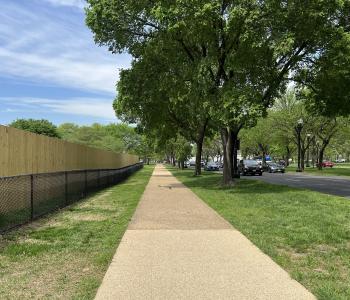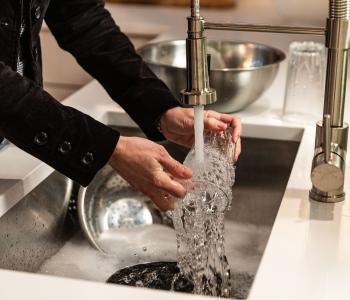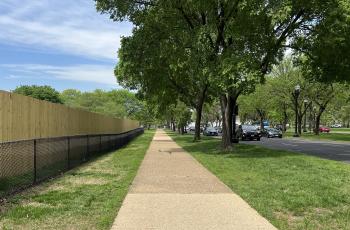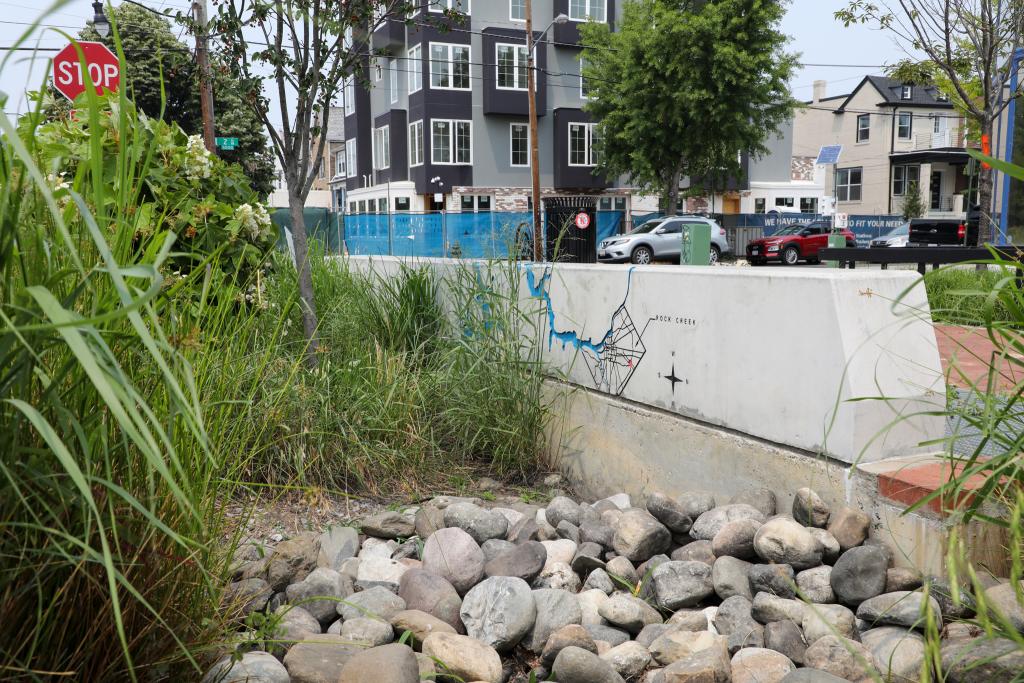District Drinking Water Meets Federal Requirements for Lead Levels
The District of Columbia Water and Sewer Authority (WASA) has sent a letter to all District residents announcing that results from tests of lead in residential tap water samples over the last 12 months show that District drinking water now meets the federal requirements under the U.S. Environmental Protection Agency (EPA) Lead and Copper Rule (LCR).
For more than a year, lead levels in drinking water have been on a continuous decline, a positive trend confirmed by test results from two EPA-required, six-month compliance testing cycles. In the latest round of sampling from more than 100 locations around the city, 92 percent were at or below the federal action level (which is above 15 parts per billion**). The average lead level in the drinking water sample test group was 7 ppb. In the first half of 2005, test results in 90 percent of the samples were also at or below the action level, with an average lead level of 7 ppb.
In the last two consecutive six-month monitoring periods, lead concentrations have been within federal standards, said WASA General Manager Jerry N. Johnson. Weve successfully met the provisions of the LCR, and will continue in our commitment to go beyond current regulatory requirements with aggressive monitoring, distribution system flushing and lead pipe replacement programs.
The LCR is a regulation in the federal Safe Drinking Water Act that requires water utilities with lead levels above the action level take action to reduce lead contamination by controlling the corrosiveness of water and replace lead service lines that carry water from the water main in the street to the property. Unlike other federal standards for drinking water contaminants, the action level is not based on a threshold for health risk. It is an indicator for the detection of excessive corrosion and is a trigger point, established by EPA, for water utilities to take actions to minimize the leaching of lead from pipes.
In 2004, WASA funded a Department of Health program that conducted voluntary blood lead level screenings of more than 6,800 District residents. The results of the tests confirmed that there was no identifiable public health impact from elevated lead levels in drinking water.
WASA purchases drinking water from the U.S. Army Corps of Engineers Washington Aqueduct for distribution to District customers. The decline in lead levels has largely been attributed to the addition in 2004, by the Aqueduct, of orthophosphate to the treatment process to reduce the corrosive nature of water on lead pipes and plumbing fixtures that contain lead.
WASA plans to spend in excess of $400 million to replace all of the Districts 29,000 known lead service lines with copper pipes. To date, more than 6,500 publicly owned lead lines have been replaced. Financing programs are available to help eligible customers replace lead service lines on private property.
Two years ago, WASA and our customers were faced with a huge challenge. Since then, weve worked with our partners at the Aqueduct and EPA to identify a solution to elevated tap water lead levels, said WASA Board Chairman Glenn S. Gerstell. We are working hard to restore the publics confidence in the quality of their drinking water. Getting to this point is the result of a lot of time and effort from a number of stakeholders, to keep the promises WASA made in our Community Water Pledge.
WASA announced its Community Water Pledge in July 2004 as a series of activities, well beyond regulatory requirements, to mitigate the elevated lead levels found in the drinking water of some District homes. Activities include accelerated and continuing lead service line replacement, use of a Mobile Community Response Unit for onsite investigation of customer concerns, and the establishment of a technical advisory council of water quality, environmental engineering and public health experts to monitor and address water quality issues.
###
** EPA uses the 90th percentile of a group of 100 tap water samples to measure compliance with the Lead and Copper Rule. The Action Level is a regulatory trigger, at above 15 ppb, that no more than 10 percent of the samples can exceed.






